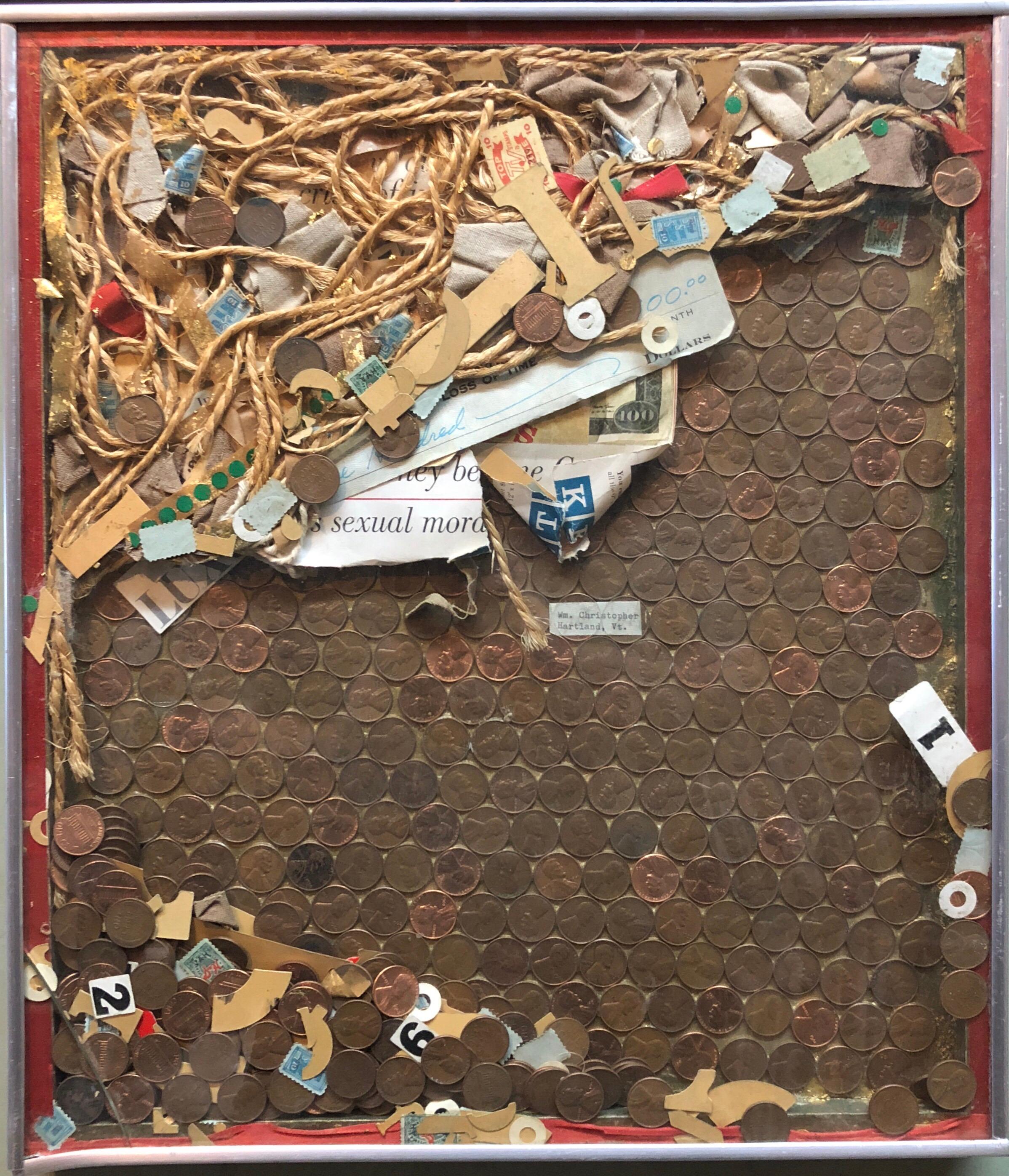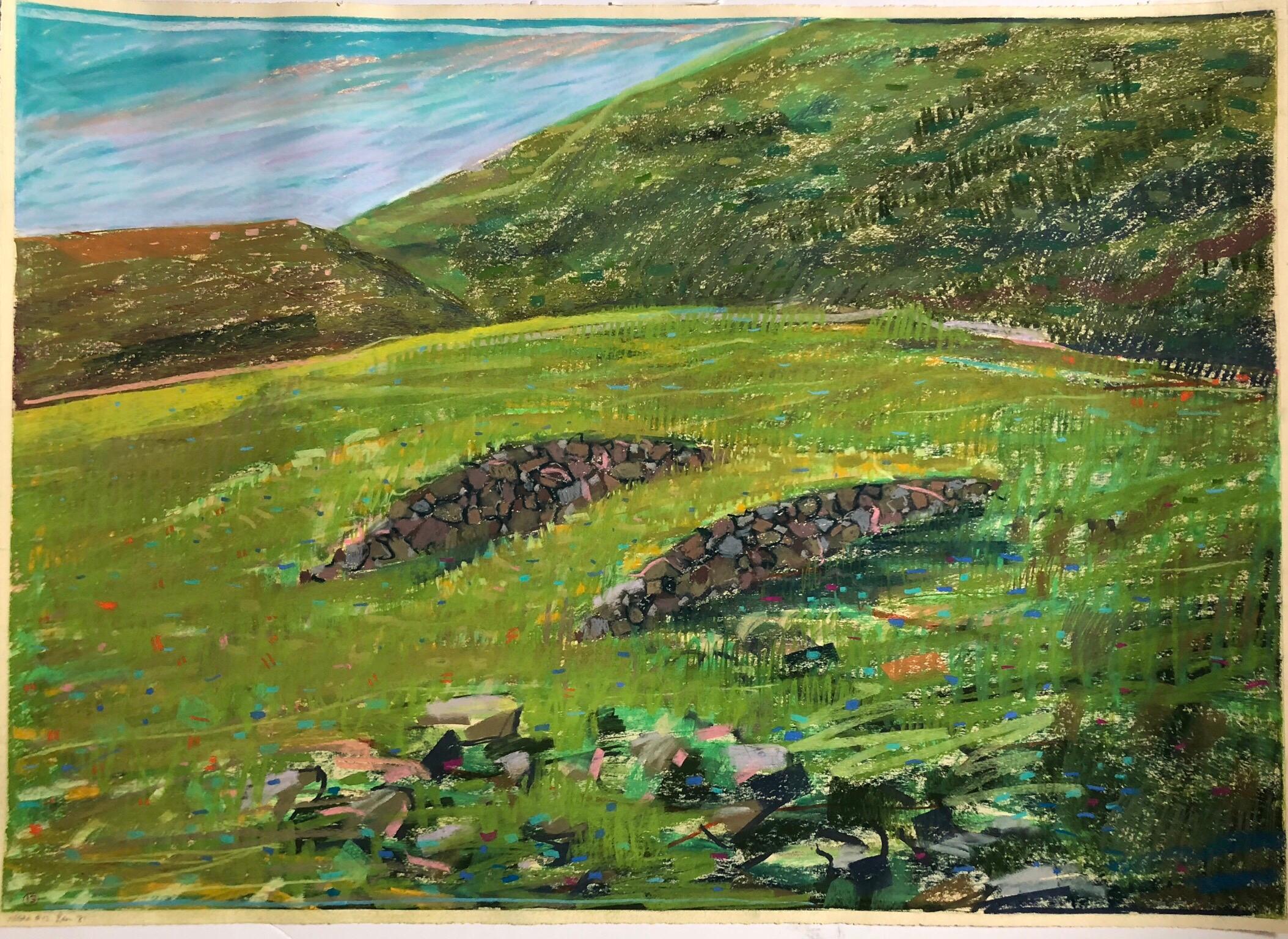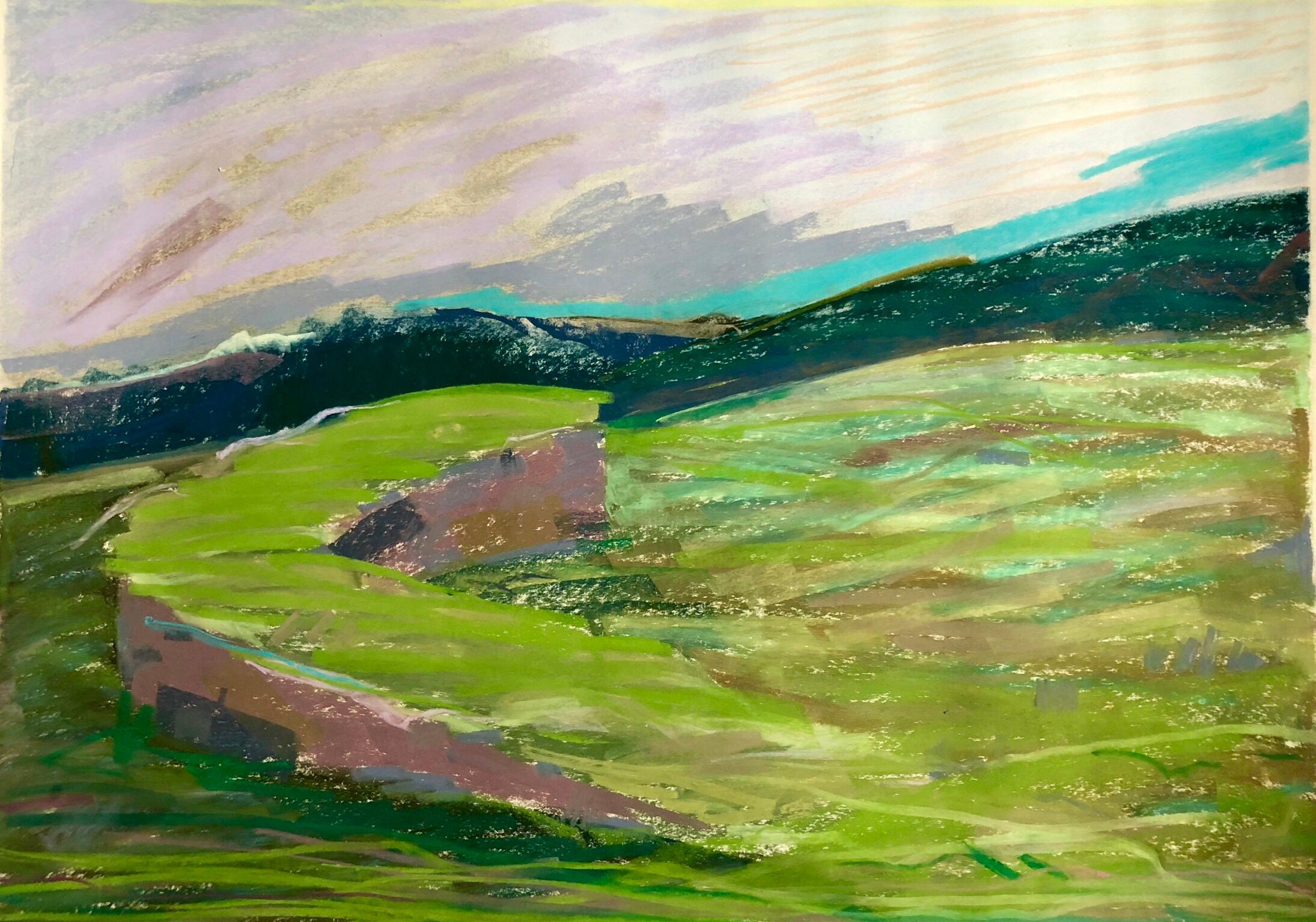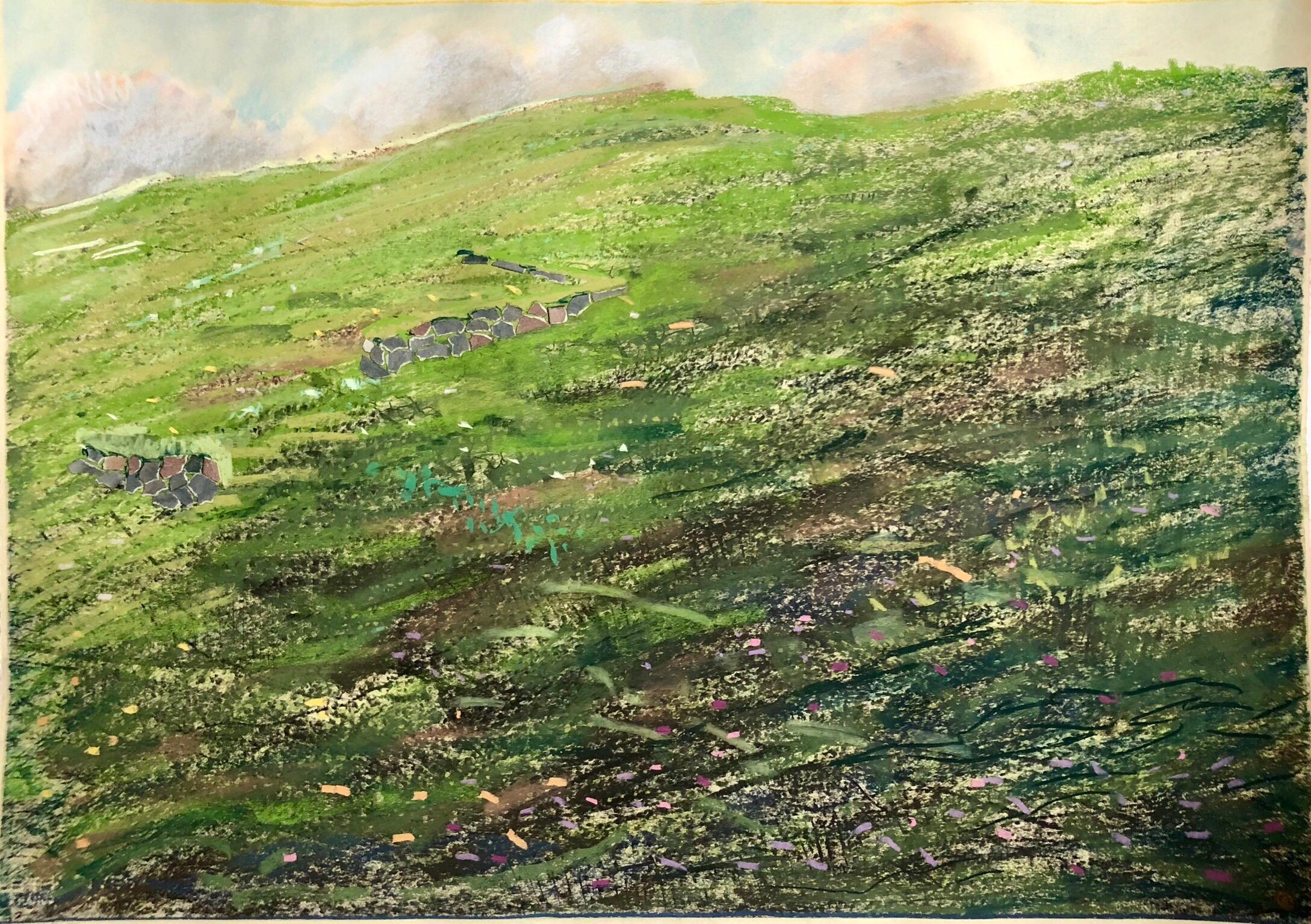Items Similar to Abstract Sculpture Mid 20th Century Modern Non Objective Biomorphic Plaster WPA
Want more images or videos?
Request additional images or videos from the seller
1 of 4
George L.K. MorrisAbstract Sculpture Mid 20th Century Modern Non Objective Biomorphic Plaster WPA1930s/40s
1930s/40s
About the Item
Modern artist George L.K. Morris created this abstract biomorphic non0objective plaster sculpture during the WPA era of the 1930s / 40s.
Though George Lovett Kingsland Morris studied with realist painters John Sloan and Kenneth Hayes Miller at the Art Students League, the influence of their points of view was replaced by that of abstractionists Amedee Ozenfant and Fernand Leger. The paintings of Morris were two-dimensional, hard-edged and brightly colored.
Born in New York City in 1905, Morris became a full-fledged abstractionist and a founder in 1936 of the American Abstract Artists. He edited "The World of Abstract Art, the group's publication, and was their president from 1948-1950.
Morris had graduated from Yale in 1928 and studied at the League until 1930, when he went to Paris to attend the Academie Moderne. A sculptor, writer, art critic and teacher in addition to abstract painter Morris himself later taught at the Art Students League from 1943-1944, as well as St. John's College, Annapolis, Maryland, 1960-1961.
Morris' intrinsic abstract bent was made even clearer by his positive feeling for Hans Arp's sculpture. He and Arp edited the French art magazine, "Plastique." Morris also edited the "Bulletin of the Museum of Modern Art" and "Partisan Review."
He died in 1975 in New York City.
George LK Morris created this mid 20th century plaster abstract sculpture. It is a non objective biomorphic abstraction.
George Lovett Kingsland Morris was widely exhibited. His work is represented in major museums: the Brooklyn Museum; Corcoran Gallery of Art, Phillips Collection and National Museum of American Art, Smithsonian Institution in Washington, D.C.; Metropolitan Museum of Art and Whitney Museum of American Art in New York City; North Carolina Museum of Art, Raleigh; Philadelphia Museum of Art; and Pennsylvania Academy of the Fine Arts, Philadelphia.
The sculpture it self is 11 x 9 x 3. The wood base is 4" tall.
- Creator:George L.K. Morris (1905-1975, American)
- Creation Year:1930s/40s
- Dimensions:Height: 15 in (38.1 cm)Width: 9 in (22.86 cm)Depth: 3 in (7.62 cm)
- Medium:
- Movement & Style:
- Period:
- Condition:
- Gallery Location:New York, NY
- Reference Number:1stDibs: LU115625102422
About the Seller
5.0
Platinum Seller
These expertly vetted sellers are 1stDibs' most experienced sellers and are rated highest by our customers.
Established in 2008
1stDibs seller since 2019
165 sales on 1stDibs
Typical response time: <1 hour
- ShippingRetrieving quote...Ships From: New York, NY
- Return PolicyA return for this item may be initiated within 3 days of delivery.
More From This SellerView All
- "Square" Contemporary Geometric Abstract Sculpture Bronze Unique European.By Bruno RomedaLocated in New York, NY"Square" Contemporary Geometric Abstract Sculpture Bronze Unique European. The sculpture measure 10 h x 11 wi inches. Geometric "Circle"...Category
1990s Contemporary Abstract Sculptures
MaterialsBronze
- "Circle" Contemporary Geometric Abstract Sculpture Bronze Unique EuropeanBy Bruno RomedaLocated in New York, NY"Circle" Contemporary Geometric Abstract Sculpture Bronze Unique European. Geometric "Circle" sculpture in bronze by the Italian artist B...Category
Early 2000s Abstract Abstract Sculptures
MaterialsBronze
- "Construction 1982" Abstract Wall Sculpture Contemporary Mid 20th Century ModernBy Seymour FogelLocated in New York, NY"Construction 1982" Abstract Wall Sculpture Contemporary Mid 20th Century Modern Painted wood assemblage, 36 x 45 x 4 inches overall. Note the label states 3 foot diameter referring to circular portion. Exhibited, Seymour Fogel Constructions Paintings and Drawing, 1984, typed on Graham Modern label verso Seymour Fogel was born in New York City on August 24, 1911. He studied at the Art Students League and at the National Academy of Design under George Bridgeman and Leon Kroll. When his formal studies were concluded in the early 1930s he served as an assistant to Diego Rivera who was then at work on his controversial Rockefeller Center mural. It was from Rivera that he learned the art of mural painting. Fogel was awarded several mural commissions during the 1930s by both the Works Progress Administration (WPA) and the Treasury Section of Fine Arts, among them his earliest murals at the Abraham Lincoln High School in Brooklyn, New York in 1936, a mural in the WPA Building at the 1939-1940 New York World's Fair, a highly controversial mural at the U.S. Post Office in Safford, Arizona (due to his focus on Apache culture) in 1941 and two murals in what was then the Social Security Building in Washington, D.C., also in 1941. Fogel's artistic circle at this time included Phillip Guston, Ben Shahn, Franz Kline, Rockwell Kent and Willem de Kooning. In 1946 Fogel accepted a teaching position at the University of Texas at Austin and became one of the founding artists of the Texas Modernist Movement. At this time he began to devote himself solely to abstract, non-representational art and executed what many consider to be the very first abstract mural in the State of Texas at the American National Bank in Austin in 1953. He pioneered the use of Ethyl Silicate as a mural medium. Other murals and public works of art done during this time (the late 1940s and 1950s) include the Baptist Student Center at the University of Texas (1949), the Petroleum Club in Houston (1951) and the First Christian Church, also in Houston (1956), whose innovative use of stained glass panels incorporated into the mural won Fogel a Silver Medal from the Architectural League of New York in 1958. Fogel relocated to the Connecticut-New York area in 1959. He continued the Abstract Expressionism he had begun exploring in Texas, and began experimenting with various texturing media for his paintings, the most enduring of which was sand. In 1966 he was awarded a mural at the U.S. Federal Building in Fort Worth, Texas. The work, entitled "The Challenge of Space", was a milestone in his artistic career and ushered in what has been termed the Transcendental/Atavistic period of his art, a style he pursued up to his death in 1984. Painted and raw wood sculpture...Category
1980s Assemblage Abstract Sculptures
MaterialsWood
- Ron Arad Screw Stools Set of Three Driade Italy Sculpture Industrial StainlessBy Ron AradLocated in New York, NYRon Arad Screw Stools Set of Three Driade Italy Sculpture Industrial Stainless Ron Arad Screw stools, set of three Driade United Kingdom / Italy, 2006 Stainless steel and aluminum 2...Category
Early 2000s Contemporary Abstract Sculptures
MaterialsSteel
- Brutalist Aluminum Brass Contemporary Totem Sculpture Abstract non objectiveLocated in New York, NYBrutalist Aluminum Brass Contemporary Totem Sculpture Abstract non objective The work has a sensational presence and look great to the ey...Category
21st Century and Contemporary Abstract Abstract Sculptures
MaterialsMetal, Brass
- Contemporary Geometric Abstract Sculpture Bronze Unique Italian European 1983By Bruno RomedaLocated in New York, NYContemporary Geometric Abstract Sculpture Bronze Unique Italian European 1983 Triangle, 1983, bronze. 6 x 12.25 x 2 inches. Signed and dated on both the sculpture and the base BIO Bruno Romeda is a complete artist because all his work always begins by a joining of twigs, rods and sticks, keeping tension and balance. Inspired by primitive geometric forms, as circle, square and triangle, Romeda is playing with projected shadows. As handed-tracks lines, his sculptures and his furniture are casted in bronze in his Italian workshop in Brescia. We find out same figures casted in bronze in bases, retaining structures on which seats, chairs, tables or pedestals are resting. Romeda’s furniture gets perfect shapes from a sort of fossilized nature. The technical perfection, the harmony of proportions and bronze work, summarize Bruno Romeda’s work. Romeda was born in 1933 in Italy and died in 2017. He lived in France, New York and Brescia. The work of Romeda has been exhibited in numerous cities; his first personal exhibition took place in Brussels in 1962, followed by solo shows in Paris, New York, Barcelona, San Francisco, Monte Carlo, Baltimore, berlin, Erbusco (Italy), Venice or Tokyo. A significant number of museums own pieces of the artist such as the Metropolitan Museum of New York, the Kasama Nichido Museum of Art in Japan, the Contemporary Art Museum of Nice, or the Robert College...Category
1980s Abstract Abstract Sculptures
MaterialsBronze
You May Also Like
- Assemblage Collage Painting/Sculpture with Pennies and Scrap Civil Rights ArtistBy William R. ChristopherLocated in Surfside, FLTitled "In G-d We Trust" signed dated and titled verso. there is also a gallery label. Mixed Media wall hanging in a pop art style. Background of pennies and then the foreground is l...Category
1960s American Modern Abstract Sculptures
MaterialsMixed Media
- Large Abstract Landscape Pastel Drawing Painting San Francisco Artist, Megan #13By Dennis LeonLocated in Surfside, FLIt has a variegated texture to it. It is signed and titled. Large format drawing or painting in pastel or crayon. pastoral landscape with boulders and rocks in pasture. Dennis Leon, was a San Francisco Bay Area sculptor and art instructor Mr. Leon was chairman of the sculpture department at the California College of Arts and Crafts in Oakland from 1972 to 1988. He remained a faculty member until his retirement as professor emeritus in 1993. A vibrant work in pastel with the energy and texture seen in the work of Wolf Kahn. He was born in London, England and emigrated in 1951 to the United States, where he studied at Temple University in Philadelphia. He graduated with art degrees, including a master's degree in fine art. He served in the U.S. Army and the Army Reserve from 1957 to 1963. In 1959, Mr. Leon joined the faculty of the Philadelphia Museum College of Art. He also worked as an art critic for the Philadelphia Inquirer until 1962. After coming to the Bay Area, he held his first local one-man show of sculpture in 1973, at the James Willis...Category
20th Century American Modern Abstract Sculptures
MaterialsOil Crayon, Oil Pastel, Archival Paper
- Large Abstract Landscape Pastel Drawing Painting San Francisco Artist, Megan #10By Dennis LeonLocated in Surfside, FLIt has a variegated texture to it. It is signed and titled. Large format drawing or painting in pastel or crayon. pastoral landscape with boulders and rocks in pasture. Dennis Leon, was a San Francisco Bay Area sculptor and art instructor Mr. Leon was chairman of the sculpture department at the California College of Arts and Crafts in Oakland from 1972 to 1988. He remained a faculty member until his retirement as professor emeritus in 1993. A vibrant work in pastel with the energy and texture seen in the work of Wolf Kahn. He was born in London, England and emigrated in 1951 to the United States, where he studied at Temple University in Philadelphia. He graduated with art degrees, including a master's degree in fine art. He served in the U.S. Army and the Army Reserve from 1957 to 1963. In 1959, Mr. Leon joined the faculty of the Philadelphia Museum College of Art. He also worked as an art critic for the Philadelphia Inquirer until 1962. After coming to the Bay Area, he held his first local one-man show of sculpture in 1973, at the James Willis...Category
20th Century American Modern Abstract Sculptures
MaterialsOil Crayon, Oil Pastel, Archival Paper
- Large Abstract Landscape Pastel Drawing Painting San Francisco Artist, Megan #6By Dennis LeonLocated in Surfside, FLIt has a variegated texture to it. It is signed and titled. Large format drawing or painting in pastel or crayon. Dennis Leon, was a San Francisco Bay Area sculptor and art instructor Mr. Leon was chairman of the sculpture department at the California College of Arts and Crafts in Oakland from 1972 to 1988. He remained a faculty member until his retirement as professor emeritus in 1993. A vibrant work in pastel with the energy and texture seen in the work of Wolf Kahn. He was born in London, England and emigrated in 1951 to the United States, where he studied at Temple University in Philadelphia. He graduated with art degrees, including a master's degree in fine art. He served in the U.S. Army and the Army Reserve from 1957 to 1963. In 1959, Mr. Leon joined the faculty of the Philadelphia Museum College of Art. He also worked as an art critic for the Philadelphia Inquirer until 1962. After coming to the Bay Area, he held his first local one-man show of sculpture in 1973, at the James Willis...Category
20th Century American Modern Abstract Sculptures
MaterialsOil Pastel, Archival Paper, Oil Crayon
- The Test, Assembled Kinetic Modernist Sculpture Puzzle ConstructionBy William King (b.1925)Located in Surfside, FL"The Test," 1970 Aluminum sculpture in 5 parts. Artist's cipher and AP stamped into male figure, front, 20 5/16" x 12 1/2" x 6 5/7" (approx.) American sculptor King is most noted for his long-limbed figurative public art sculptures depicting people engaged in everyday activities such as reading or conversing. He created his busts and figures in a variety of materials, including clay, wood, metal, and textiles. William Dickey King was born in Jacksonville, Florida. As a boy, William made model airplanes and helped his father and older brother build furniture and boats. He came to New York, where he attended the Cooper Union and began selling his early sculptures even before he graduated. He later studied with the sculptor Milton Hebald and traveled to Italy on a Fulbright grant. Mr. King worked in clay, wood, bronze, vinyl, burlap and aluminum. He worked both big and small, from busts and toylike figures to large public art pieces depicting familiar human poses — a seated, cross-legged man reading; a Western couple (he in a cowboy hat, she in a long dress) holding hands; a tall man reaching down to tug along a recalcitrant little boy; a crowd of robotic-looking men walking in lock step. Mr. King’s work often reflected the times, taking on fashions and occasional politics. In the 1960s and 1970s, his work featuring African-American figures (including the activist Angela Davis, with hands cuffed behind her back) evoked his interest in civil rights. But for all its variation, what unified his work was a wry observer’s arched eyebrow, the pointed humor and witty rue of a fatalist. His figurative sculptures, often with long, spidery legs and an outlandishly skewed ratio of torso to appendages, use gestures and posture to suggest attitude and illustrate his own amusement with the unwieldiness of human physical equipment. His subjects included tennis players and gymnasts, dancers and musicians, and he managed to show appreciation of their physical gifts and comic delight at their contortions and costumery. His suit-wearing businessmen often appeared haughty or pompous; his other men could seem timid or perplexed or awkward. Oddly, or perhaps tellingly, he tended to depict women more reverentially, though in his portrayals of couples the fragility and tender comedy inherent in couplehood settled equally on both partners. His first solo exhibit took place in 1954 at the Alan Gallery in New York City. King was elected to the American Academy of Arts and Letters in 2003, and in 2007 the International Sculpture Center honored him with the Lifetime Achievement in Contemporary Sculpture Award. Mr. King’s work is in the collections of the Metropolitan Museum of Art, Guggenheim Museum, Whitney Museum and the Museum of Modern Art in New York and the Hirshorn Museum at the Smithsonian American Art Museum in Washington, among other places, and he had dozens of solo gallery shows in New York and elsewhere. Reviews of his exhibitions frequently began with the caveat that even though the work was funny, it was also serious, displaying superior technical skills, imaginative vision and the bolstering weight of a range of influences, from the ancient Etruscans to American folk art to 20th-century artists including Giacometti, Calder and Elie Nadelman. The New York Times critic Holland Cotter once described Mr. King’s sculpture as “comical-tragical-maniacal,” and “like Giacomettis conceived by John Cheever.”Category
1970s American Modern Figurative Sculptures
MaterialsMetal
- Helen Shirk Sculpture Hand Crafted Studio Vessel, Copper Patina, Colored PencilsLocated in Surfside, FLTitle: Red Pod, CV110V, San Diego, 1997 Fabricated, hammered copper, colored pencils, patina. This is not signed. It bears a label on the interior and the artist has kindly confirmed the attribution to me. Helen Shirk...Category
1990s American Modern Abstract Sculptures
MaterialsCopper
Recently Viewed
View AllMore Ways To Browse
Midcentury Abstract Sculpture
Modern Sculpture Tall
Mid Century Tall Sculpture
3d Modern Sculpture
Tall Midcentury Sculpture
Plaster Collection
Collection Of Plasters
Tall Abstract Sculpture
French Plaster Sculptures
Modern Plaster Sculpture
Fine Plaster
Vintage Wood Plaster
Modern Plaster Art
Midcentury Modern Abstract Wood Sculpture
French Tall Sculpture
4 Tall Sculptures
1930s Wood Sculpture
Plaster Sculpture Mid Century





